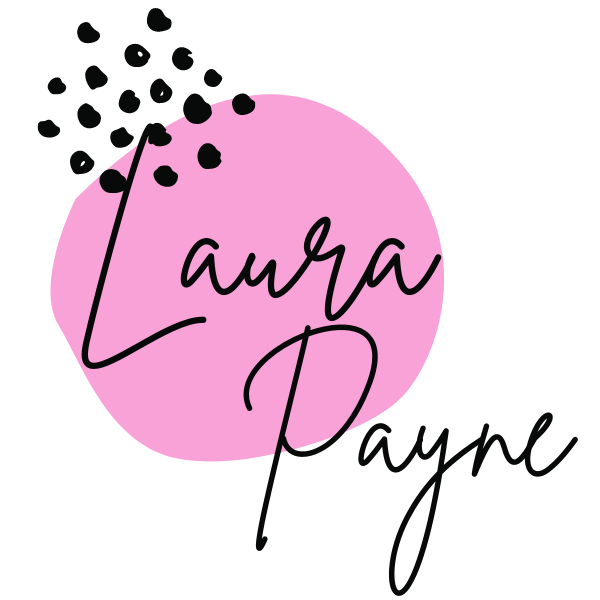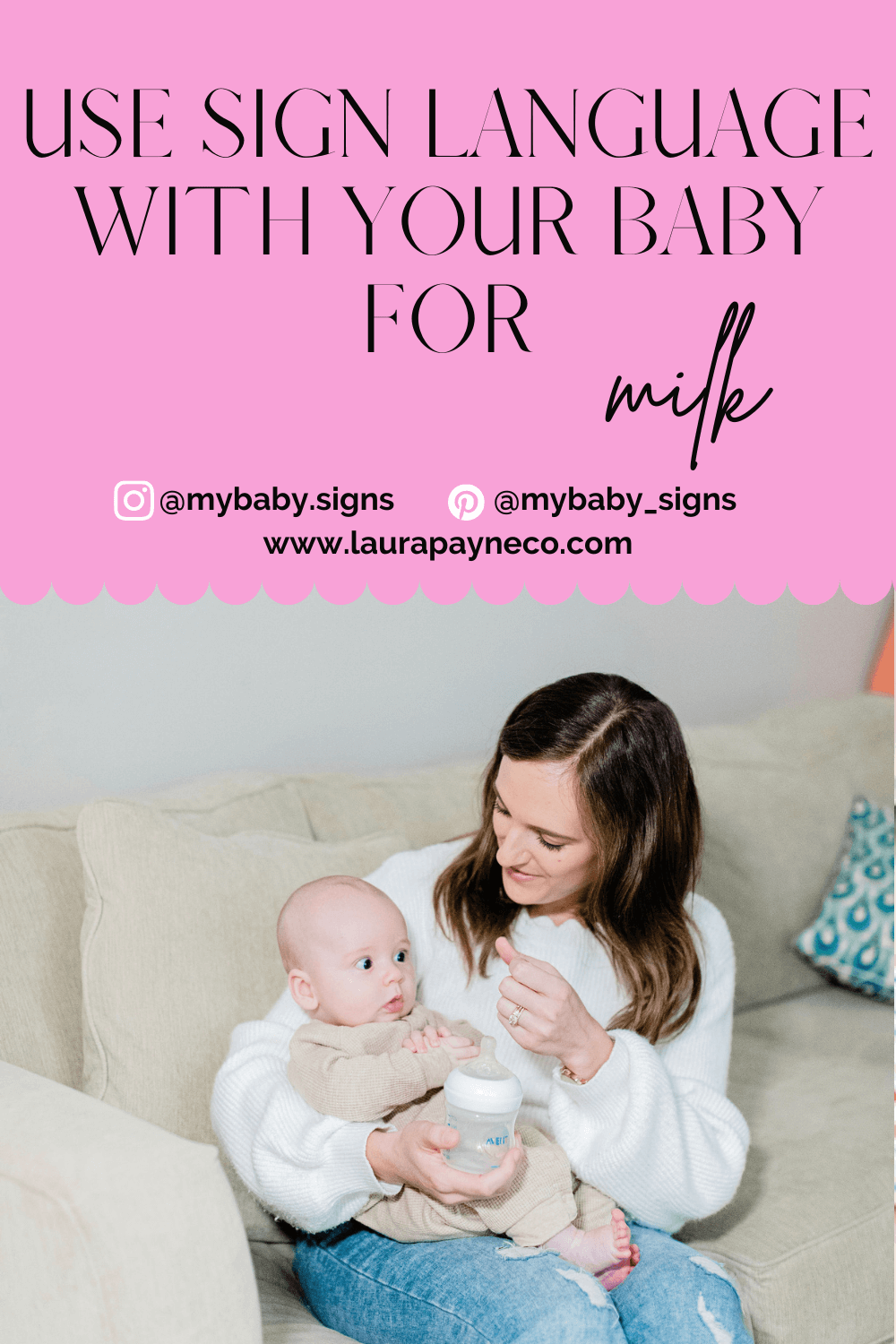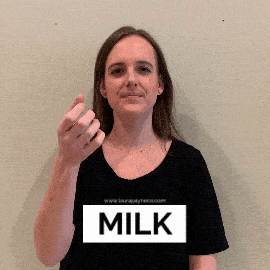How To Sign MILK In Sign Language
Parents interested in using sign language with their babies are eager to learn the sign for milk! In addition to learning the correct ASL sign for milk (yep, many resources have an incorrect sign pictured), it’s also important to understand why this is a great early sign to use with your baby, when to use it (yep again, I’ve got more ideas than you probably do), and how you know if your baby understands you!
If you don’t already, please follow me on Instagram for more about how sign language can be a game charger for your baby / toddler’s early communication skills.
Why is MILK a great first sign for babies?
It meets their immediate needs. Babies have milk frequently throughout their day, as it is the main source of nutrition for the first 12 months. Babies communicate from the moment they are born when they want to be fed.
It can be easily repeated, for frequent exposure. Young babies feed every few hours around the clock, and older babies feed multiple times during the day. This provides many opportunities for the sign for milk to be used, practiced, and part of the family’s routine, thus the baby may sign “MILK” as their first sign!
It aligns with a baby’s early motor development. The sign itself for milk (see below for a video!) is also a motor skill that babies develop at only a few months of age. This allows for the sign to be one of a baby’s first few signs!
Want to use sign language with your little one?
Get Started Now with 10 functional ASL signs to start using with your baby or toddler right away. Learn 3 tips to ensure you are using signs correctly and with realistic expectations. Whether you have already started signing, or just warming up to the idea, this free guide will take you one step closer to your goal!
Look Who’s Signing Now is my signature four part course that teaches you the exact blueprint I use to teach my own children sign language. Beginning with the foundation of why and when to use baby sign language, how to implement it, and what signs to use. With this self-study e-course, you will have the confidence to sign with your baby and boost their early communication while reducing frustrations, tantrums, and time wasted playing the guessing game.
Check out my online resources for parents! Browse my current offerings.
Learn baby sign language for milk
To sign MILK, open and close your dominant hand (the hand you write with) twice. Notice that my thumb is part of the fist (forming an S handshape), and not on top like is incorrectly taught in many “baby sign language” resources.
Signing correctly is important. Sign language is the language of deaf individuals. Changing handshapes can either change the meaning of a word completely, or “mispronounce” the word. The incorrect sign that is used in the “baby sign” books and websites doesn’t mean something differently, but it signing it wrong, as if you were saying something like “monk.”
When should you use the sign for milk?
There are many opportunities to use the sign for milk, both you and your child. Some of these include:
🤱🏻wanting or preparing to nurse
🍼 requesting or preparing a bottle
🥛 needs a refill
👩🏽🍼 milk is spilled or leaks
👶 cannot find the cup or bottle
👨🏼🍼 still hungry
How do you know if your baby understands your signs?
Your baby can recognize signs much earlier than they can sign back to you. When your baby begins to recognize signs (sometimes as early as 3 months, but usually between 4-6 months), it is a pretty exciting feeling!
Look for these cues from your baby. They may be recognizing your sign for milk!
👀 eyes may open big & wide, very alert and focused on the sign
👅 give a big, open mouth smile & sweet baby giggles, excited for what was to come
😭 if they are already crying, they may actually cry LOUDER because they are readyyyy for you to get the memo
💪🦵arms and legs may kick and punch from excitement, pumped that their needs are being met




